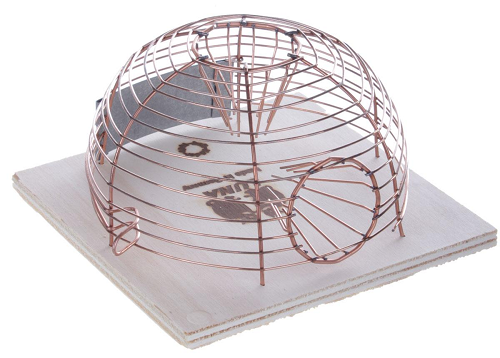EC Cryptography Tutorials - Herong's Tutorial Examples - v1.02, by Dr. Herong Yang
What Is Trapdoor Function
This section describes what is Trapdoor Function - An operation that is much easier to perform than its reverse operation.
Let's pause for a moment on the discussion of DLP and take a look at the definition of Trapdoor Function.
What Is Trapdoor Function? A Trapdoor Function is an operation that is much easier to perform than its reverse operation.
Multiplication of two large prime numbers is a trapdoor function because:
1. Performing the multiplication of two given large prime numbers is easy. For example, p=... and q=... are two prime numbers, f(p,q)=p*q=... can be easily calculated.
2. If f(p,q)=p*q=... is given, find p and q is called factoring an integer into prime numbers, and is difficult.
Of course, when p and q are very small, factoring p*q is not that difficult. So f(p,q)=p*q is a trapdoor function, only when p and q are large prime numbers.
By the way, f(p,q)=p*q, as a trapdoor function has been widely used in cryptography to generate public and private keys.
Trapdoor concept is also used build mouse traps (source: caramembuatkue.info). Easy to pass in one direction, and difficult to pass in the reverse direction.

Table of Contents
Geometric Introduction to Elliptic Curves
Algebraic Introduction to Elliptic Curves
Abelian Group and Elliptic Curves
►Discrete Logarithm Problem (DLP)
Doubling or Squaring in Abelian Group
Scalar Multiplication or Exponentiation
What Is Discrete Logarithm Problem (DLP)
Examples of Discrete Logarithm Problem (DLP)
Scalar Multiplication on Elliptic Curve as Trapdoor Function
Generators and Cyclic Subgroups
tinyec - Python Library for ECC
ECDH (Elliptic Curve Diffie-Hellman) Key Exchange
ECDSA (Elliptic Curve Digital Signature Algorithm)